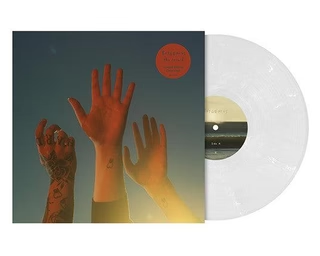Simone El Oufir Pierini- G.F. Couperin: Sonatas, Variations, & Rondos for fortepiano

This first recording of a selection of Gervais-Francois Couperin's keyboard works aims to give an overview of the youngest member of the Couperin family with works that have survived to the present day. The son of Armand-Louis Couperin (1727-1789), to whom Brilliant Records has also dedicated a release featuring his complete harpsichord works (see BC 95459), G.-F. Couperin (1759-1826) is the last known musician in the line of the greatest French musical dynasty of it's time. The selection of pieces presented here is meant to demonstrate his compositional exploration of the fortepiano. The four most employed forms in Couperin's keyboard oeuvre are the variations, the sonata, the rondo, and the piece in free form. This programme features the most important examples of these four types. The Two Sonatas Op.1, issued in 1788, were most probably intended to officially present the young composer to the French connoisseurs. They were conceived pour le clavecin ou forte-piano, with accompaniment of violin and cello ad libitum. Both sonatas consist of three movements, the first one in a large sonata form. A slower movement follows, the one in the second sonata consisting of a theme with 7 variations. A final movement in rondo form closes both sonatas. Stylistically, they are relatively close to other sonatas of the time, although they feature quasi-symphonic writing in the first movements. The highly virtuosic style exemplified in the two Sonatas Op.1 becomes even more evident in two single pieces, strictly related to one another: Les Incroyables Op.6 and Les Merveilleuses Op.7. The two pieces refer to adherents of a fashion trend highly favoured by the aristocracy in Paris during the French Directory (1795-99). The men were called Incroyables ("incredible") and the women Merveilleuses ("marvelous"), and they greeted the new regime with an outbreak of luxury, decadence, even silliness, perhaps as a reaction to the Terror period. The two pieces are in free form, with a ritornello in the first, shorter part. However, this form actually owes much to the rondo, which Couperin had already proved to master, both in his sonatas and in a short individual Rondo presented here, published in the Journal de Clavecin in 1782. This short and elegant piece, which may possibly be the first piece ever published by Couperin, is the closest one to the classical period, with it's almost-Viennese flavour. Two sets of variations both published in 1790, together with the slow movement of the Sonata Op.1 No.2, show Couperin's adeptness with this genre. It is worth noting that while the first set is based on one of the most emblematic of Revolutionary songs, 'Ah! Ca ira', the second is based on a royalist song, the Complainte bearnoise, a troubadour's protestations at King Louis XVI being housed in the Palais de Tuileries at the beginning of the revolution. Other information: - Recorded September 2023, Monte Compatri, Italy - Booklet in English contains liner notes by the artist, as well as his biography - Simone PIerini plays an original fortepiano by J. Haselmann (c.1800-10), tuned to A=430 Hz in the Young 1 temperament (1800) - This premiere recording of a selection of Gervais-Francois Couperin's works aims to give an overview of the latest member of the Couperin family whose works has survived to the present day. Son of Armand-Louis Couperin (1727-1789), Gervais-Francois Couperin (1759-1826) was the latest known musician of the greatest French musical dynasty of the time. He was a highly esteemed composer and musician, who played for Napoleon, and was organist of several important Churches in Paris (Saint-Gervais, St. Sulpice and others). - The four most employed forms in Couperin's keyboard oeuvre are the variations, the sonata, the rondo, and the piece in free form, each of which is represented in this new recording. The highly virtuosic style of the two sonatas Op.1 becomes even evident in Les Incroyables Op.6, and Les Merveilleuses Op.7. The two pieces refer to the followers of a fashion highly favoured by the aristocracy in Paris during the French Directory (1795-1799). The followers of this new fashion, the Incroyables (i. e., the "incredibles") as concerns men, the Merveilleuses (the "marvelous women") for the women, greeted the new regime with an outbreak of luxury, decadence, and even silliness. - Played on the fortepiano by Simone Pierini Born in Rome in 1996, Pierini began studying music at the age of eight. Aged eighteen, he graduated in piano at S. Cecilia Conservatory of Music, Rome, with highest honors. He afterwards grew interest in historically informed piano practice, attending masterclasses led by Alexei Lubimov, Andreas Staier, Tobias Koch, Stefano Fiuzzi. Subsequently, his interest about historical keyboards in general grew further, and he began studying harpsichord and basso continuo with such teachers as Andrea Coen and Giovanni Togni. His recordings with music by Cherubini and the complete piano sonatas by Helene de Montgeroult were very positively received by the press. Classic FM nominated him as one of the 30 best musicians under 30 in 2024.
This first recording of a selection of Gervais-Francois Couperin's keyboard works aims to give an overview of the youngest member of the Couperin family with works that have survived to the present day. The son of Armand-Louis Couperin (1727-1789), to whom Brilliant Records has also dedicated a release featuring his complete harpsichord works (see BC 95459), G.-F. Couperin (1759-1826) is the last known musician in the line of the greatest French musical dynasty of it's time. The selection of pieces presented here is meant to demonstrate his compositional exploration of the fortepiano. The four most employed forms in Couperin's keyboard oeuvre are the variations, the sonata, the rondo, and the piece in free form. This programme features the most important examples of these four types. The Two Sonatas Op.1, issued in 1788, were most probably intended to officially present the young composer to the French connoisseurs. They were conceived pour le clavecin ou forte-piano, with accompaniment of violin and cello ad libitum. Both sonatas consist of three movements, the first one in a large sonata form. A slower movement follows, the one in the second sonata consisting of a theme with 7 variations. A final movement in rondo form closes both sonatas. Stylistically, they are relatively close to other sonatas of the time, although they feature quasi-symphonic writing in the first movements. The highly virtuosic style exemplified in the two Sonatas Op.1 becomes even more evident in two single pieces, strictly related to one another: Les Incroyables Op.6 and Les Merveilleuses Op.7. The two pieces refer to adherents of a fashion trend highly favoured by the aristocracy in Paris during the French Directory (1795-99). The men were called Incroyables ("incredible") and the women Merveilleuses ("marvelous"), and they greeted the new regime with an outbreak of luxury, decadence, even silliness, perhaps as a reaction to the Terror period. The two pieces are in free form, with a ritornello in the first, shorter part. However, this form actually owes much to the rondo, which Couperin had already proved to master, both in his sonatas and in a short individual Rondo presented here, published in the Journal de Clavecin in 1782. This short and elegant piece, which may possibly be the first piece ever published by Couperin, is the closest one to the classical period, with it's almost-Viennese flavour. Two sets of variations both published in 1790, together with the slow movement of the Sonata Op.1 No.2, show Couperin's adeptness with this genre. It is worth noting that while the first set is based on one of the most emblematic of Revolutionary songs, 'Ah! Ca ira', the second is based on a royalist song, the Complainte bearnoise, a troubadour's protestations at King Louis XVI being housed in the Palais de Tuileries at the beginning of the revolution. Other information: - Recorded September 2023, Monte Compatri, Italy - Booklet in English contains liner notes by the artist, as well as his biography - Simone PIerini plays an original fortepiano by J. Haselmann (c.1800-10), tuned to A=430 Hz in the Young 1 temperament (1800) - This premiere recording of a selection of Gervais-Francois Couperin's works aims to give an overview of the latest member of the Couperin family whose works has survived to the present day. Son of Armand-Louis Couperin (1727-1789), Gervais-Francois Couperin (1759-1826) was the latest known musician of the greatest French musical dynasty of the time. He was a highly esteemed composer and musician, who played for Napoleon, and was organist of several important Churches in Paris (Saint-Gervais, St. Sulpice and others). - The four most employed forms in Couperin's keyboard oeuvre are the variations, the sonata, the rondo, and the piece in free form, each of which is represented in this new recording. The highly virtuosic style of the two sonatas Op.1 becomes even evident in Les Incroyables Op.6, and Les Merveilleuses Op.7. The two pieces refer to the followers of a fashion highly favoured by the aristocracy in Paris during the French Directory (1795-1799). The followers of this new fashion, the Incroyables (i. e., the "incredibles") as concerns men, the Merveilleuses (the "marvelous women") for the women, greeted the new regime with an outbreak of luxury, decadence, and even silliness. - Played on the fortepiano by Simone Pierini Born in Rome in 1996, Pierini began studying music at the age of eight. Aged eighteen, he graduated in piano at S. Cecilia Conservatory of Music, Rome, with highest honors. He afterwards grew interest in historically informed piano practice, attending masterclasses led by Alexei Lubimov, Andreas Staier, Tobias Koch, Stefano Fiuzzi. Subsequently, his interest about historical keyboards in general grew further, and he began studying harpsichord and basso continuo with such teachers as Andrea Coen and Giovanni Togni. His recordings with music by Cherubini and the complete piano sonatas by Helene de Montgeroult were very positively received by the press. Classic FM nominated him as one of the 30 best musicians under 30 in 2024.





